
by Krista | Jul 28, 2018 | Winter
It’s incredibly still this morning as I sit on the back veranda, bundled up in my red, wool, medieval cloak, watching the magical eclipse and waiting for the sky to lighten in the east. There’s no wind, no birds calling, and the dogs are sound asleep after a night of vigilance.
So much has happened in recent months, good things, hard things, things that have healed me in new and lovely ways. I will tell you more in the months to come, but for now I’ll focus on the most recent.
Abbey Medieval Festival.
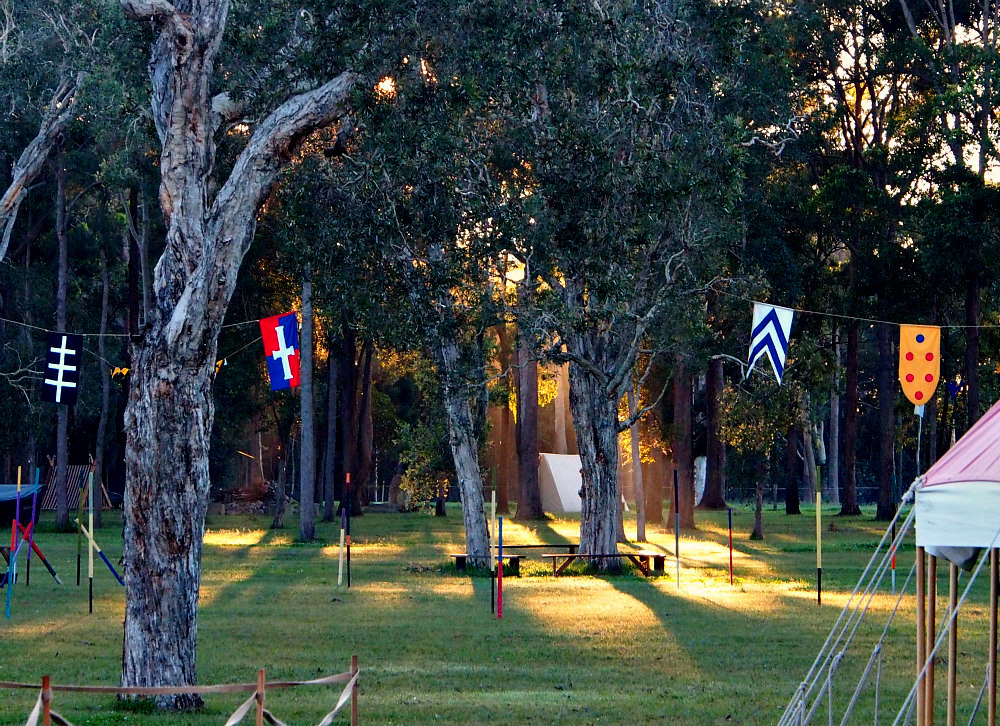
This place, this event, is really special to me. Bear and I go a week early and spend Sunday with our Blackwolf members getting every tent erected and as much done as we can before sunset and everyone else has to go home.
Then it’s just us for 5 days. We work hard during the days, getting all the little bits and pieces of our medieval encampment in place, but early mornings are all mine.
I slip out of bed before Bear wakes, brew a big mug of coffee, and hunker down in our Gathering Tent surrounded by books and notebooks, markers and pens, and a cozy blanket to keep me warm. I write and draw, read and think, write some more, draw some more, then tell Bear all about it when he gets up.
It’s the one time of my year when I don’t have any demands on me. There are no animals to feed, no gardens to water, no articles to write or photo shoots to set up, no clients to meet, no phone calls to return, no emails to answer, and no meetings to attend.
I get to just be. And that’s a precious thing.
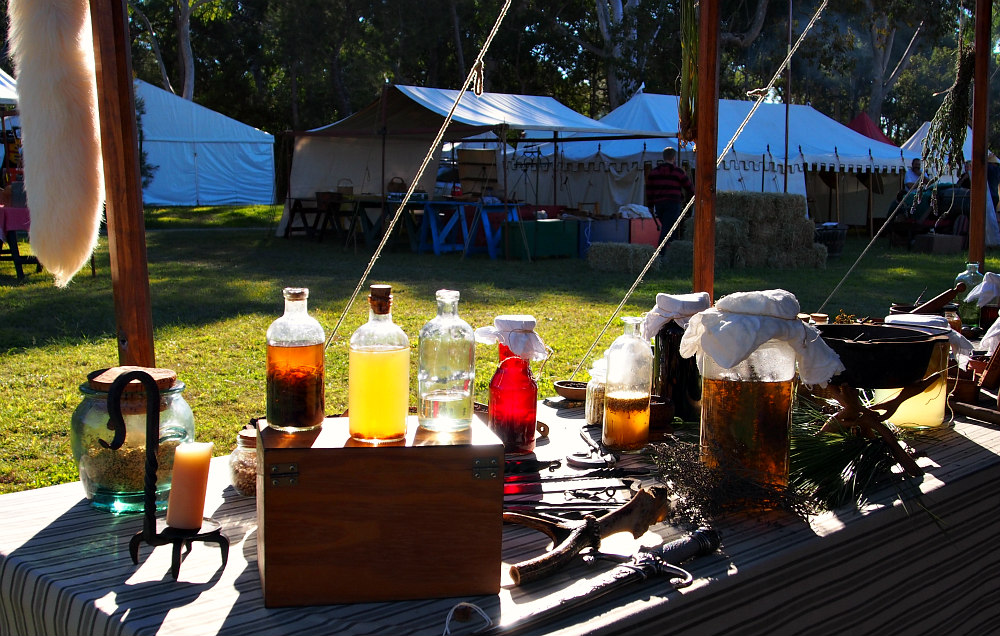
It’s always a bit weird in the beginning. I feel fidgety and distracted, my body certain that there must be something I should be doing and looking after. But soon the silence and morning light, the smell of gum trees and damp earth, the sound of fires crackling and cows lowing, they calm and settle me and I begin to truly relax.
Abbey is always a time of healing and growing for me. As I mix my medieval remedies and hang fresh herbs above the market stall, cook over the fire and sit by the dancing flames at night with a glass of wine, visit with dear friends who stop by and slowly transition from modern to medieval life, my brain calms and spirits settle and I’m able to focus and work through things.
I make time to be alone, to heal the things that need to be healed, and spend happy hours planning and dreaming and clarifying what’s important to me.
I make time to hang out with Bear and talk or read together, sharing our latest medieval research, figuring out ways to support our people and make our group stronger and better.
I make time to connect with others, old friends and new ones, never failing to find kindred spirits among enactors and public alike.
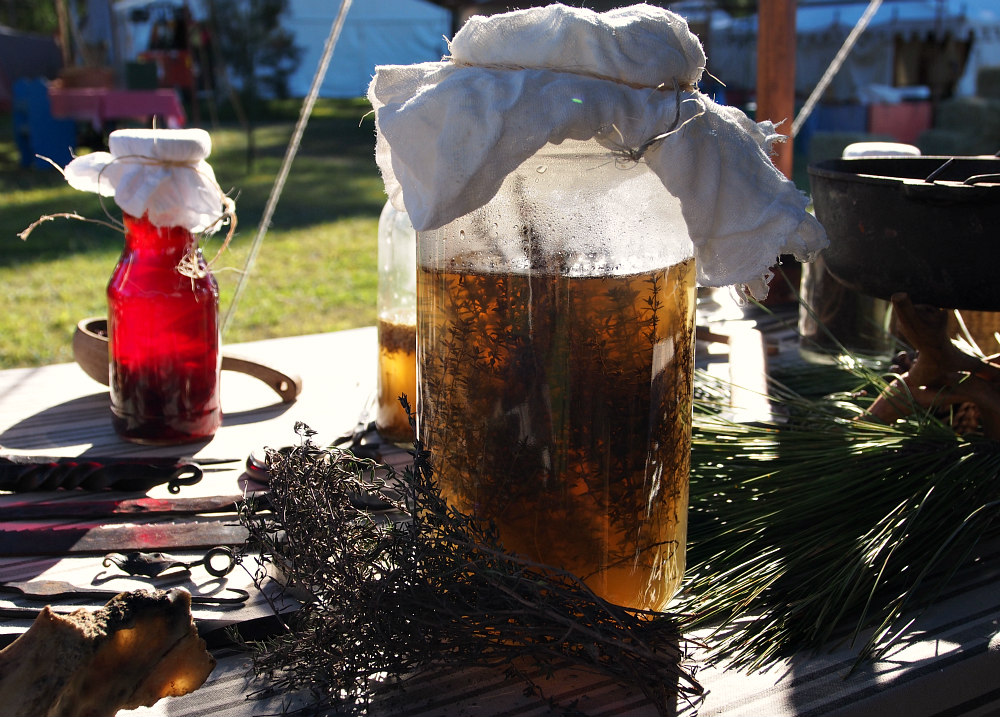
We had a wonderful time.
I loved doing my demonstrations on medieval folk medicine and medieval Bedouin food, and made some great connections with people who want me to do workshops in the Brisbane area. I loved wandering through everyone’s camps and seeing their amazing tents, garb, food, and crafts, and I loved learning about basket-weaving and medieval farming practices and the history of henna.
My favourite memories are those shared with my loves.
Early mornings around the campfire frying bacon, eggs, and sausages, everyone huddled in their cloaks, hands clasped around steaming mugs of coffee as we visited and laughed and told stories from the day before.
Dessert and cold beer in the afternoons, talking for ages about everything from history and our daily lives to genealogies and gardening.
One of the best moments was at our feast Saturday night, 18 of us gathered around long tables aglow with candlelight, sipping wine and clapping along to live Celtic and medieval music provided by our neighbours. I loved looking around at the light flickering on so many dear faces, hearing the whoops and hollers, clapping until our hands hurt. It was a great night.
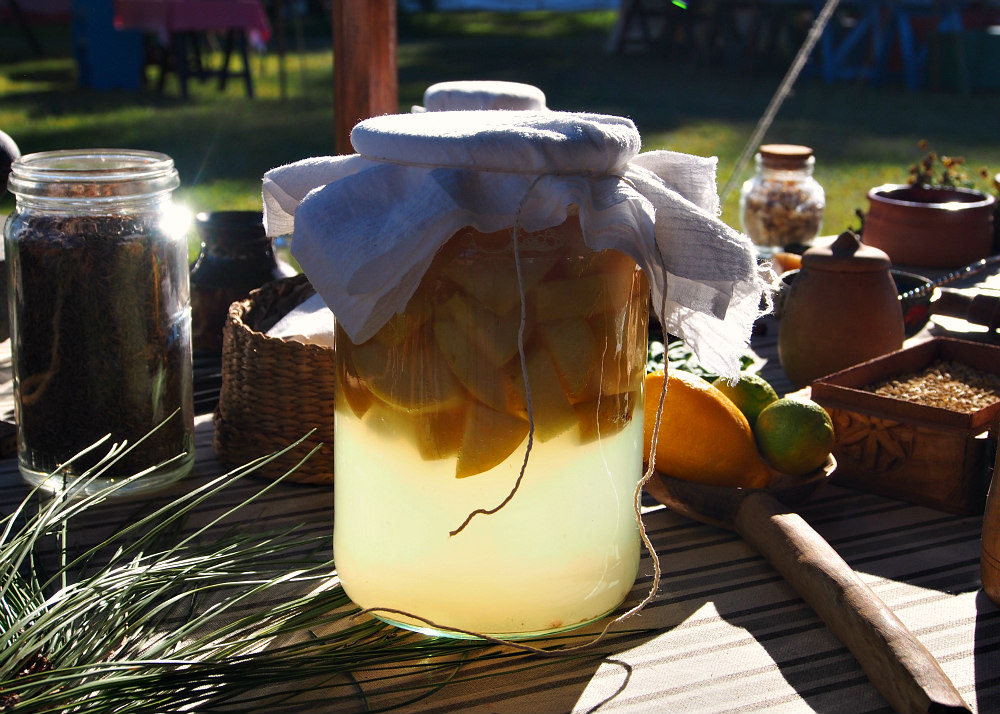
We returned home sore and tired, so excited for hot showers and our electric blanket, full of great memories with the best of people.
I kept lists and sketches of all the things I was inspired by at Abbey, and I’ve been making them happen one by one.
I redesigned my gardens, making more room for the healing herbs I love so much, completely cleaned and organized one end of one shed, and brewed big vats of elderberry cordial spiced with black pepper, cinnamon, and star anise and elderflower tea with yarrow, spearmint, hibiscus, and peppermint.
It’s lovely to get away and restore our spirits and invigorate our zest for life, and it’s equally lovely to come home again and add in the things that make life here even more special.
Where is your favourite place to restore your spirits? xo

by Krista | Sep 25, 2015 | Spring
One of my favorite things about medieval enactment is learning about the spices, fruits, vegetables, and herbs that were used in medieval times.
This past weekend I got to see the Templar style of eating and found it fascinating.
My friend Michelle, one of the pilgrims in the Templar encampment, made these beautiful little jars featuring some of the spices she uses to make food for the Templar group. I’ve used all of them in my own cooking except the Grains of Paradise, and I’m excited to get some of my own one day soon to experiment with.
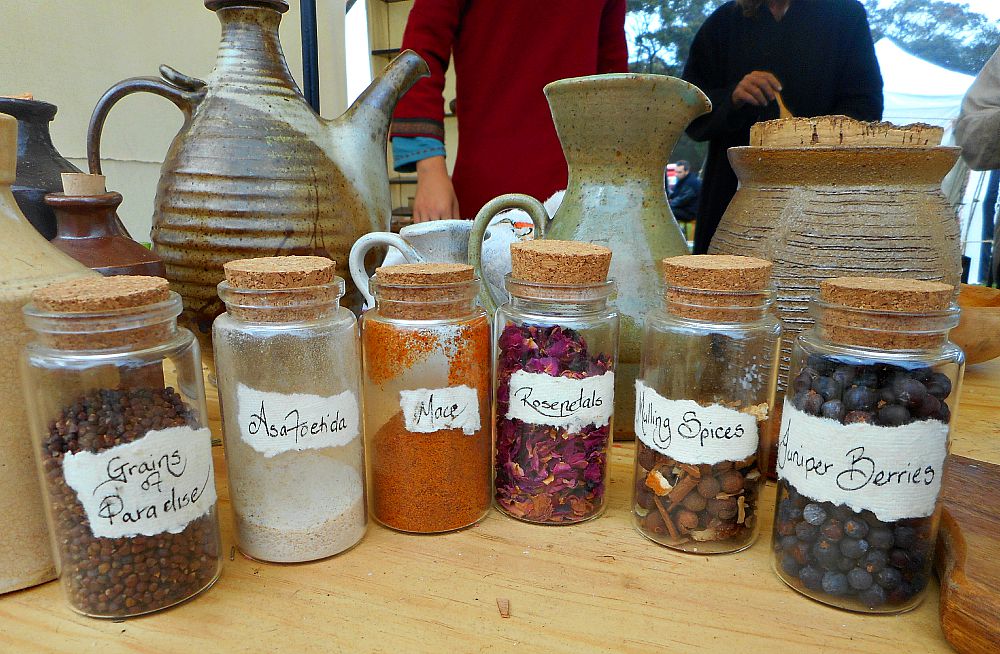
Here’s my friend Lawrence cutting up bread for a marvelous invention he made over the weekend, a medieval version of French toast.
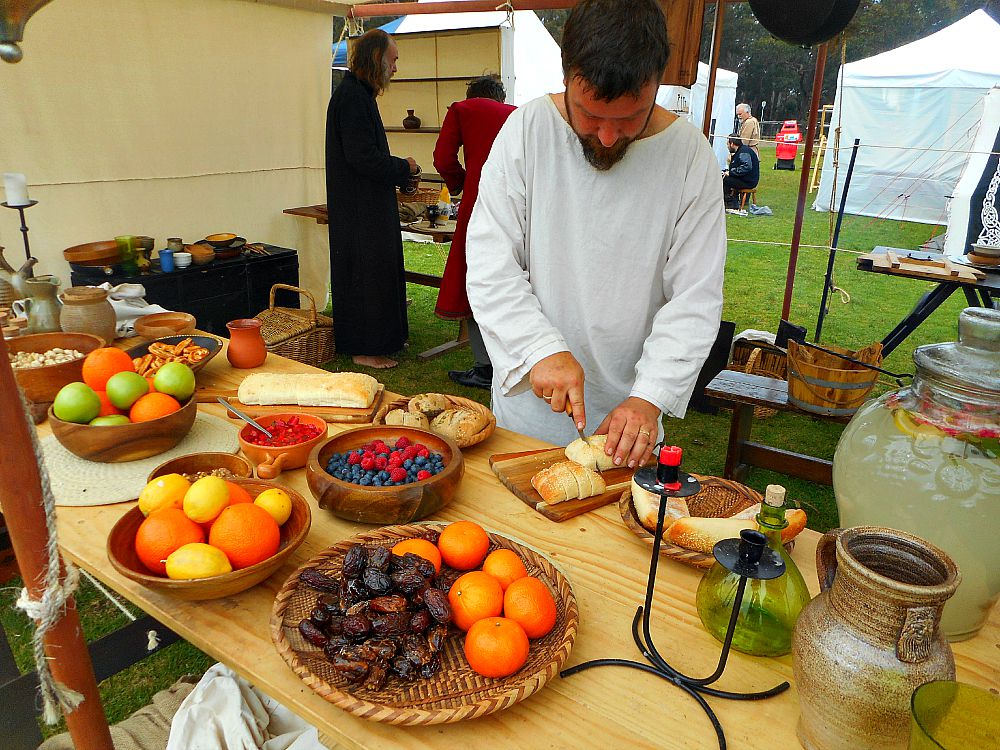
Instead of the traditional egg, milk, and cinnamon mixture we use to dip bread in before frying, he dipped the slices in apple juice then cinnamon and toasted each piece over the fire. Oh my. Such comforting flavors and heavenly smells.
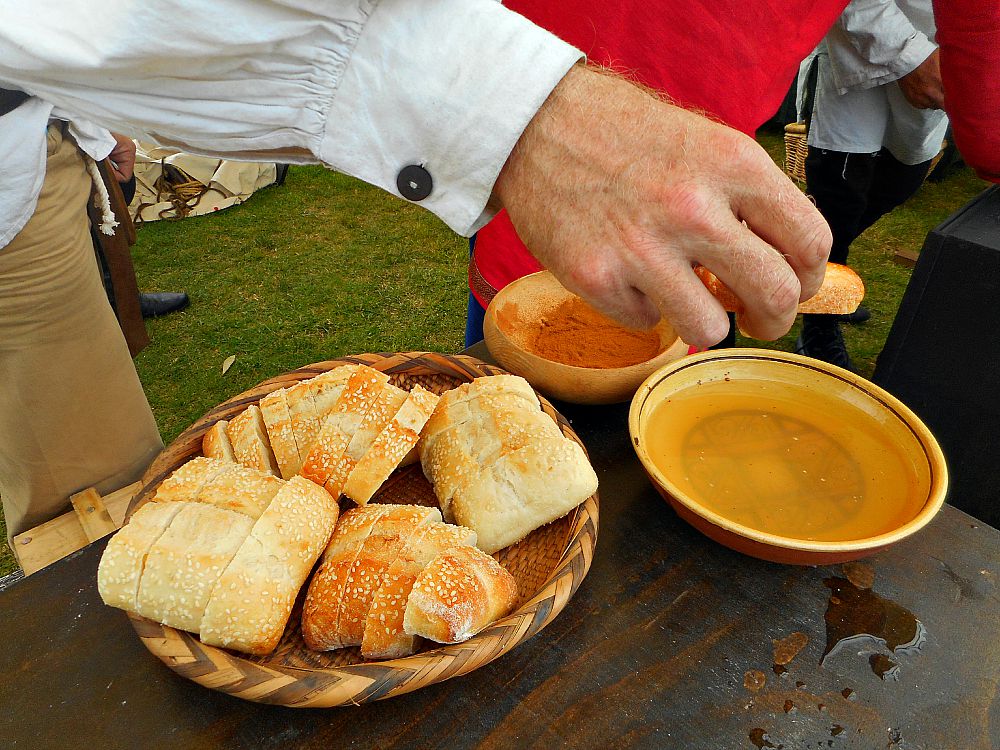
The kitchen bench was also covered with an array of bowls full of good things to snack on like fresh strawberries and salty pistachios.
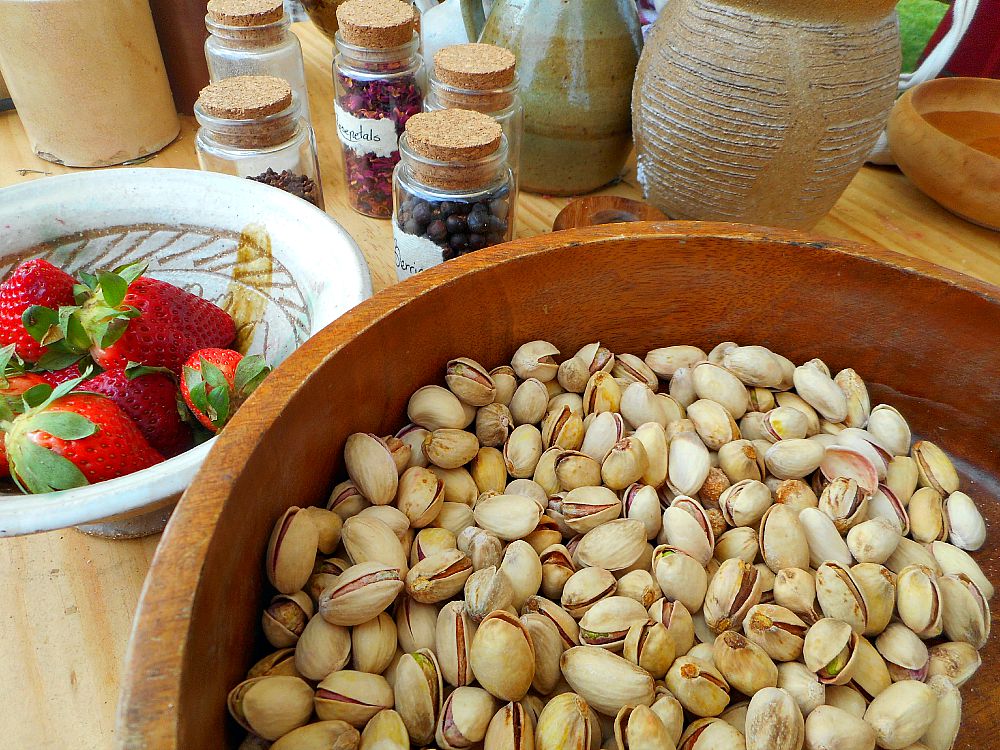
Oranges, mandarins, apples, and plump dates were also in abundance.
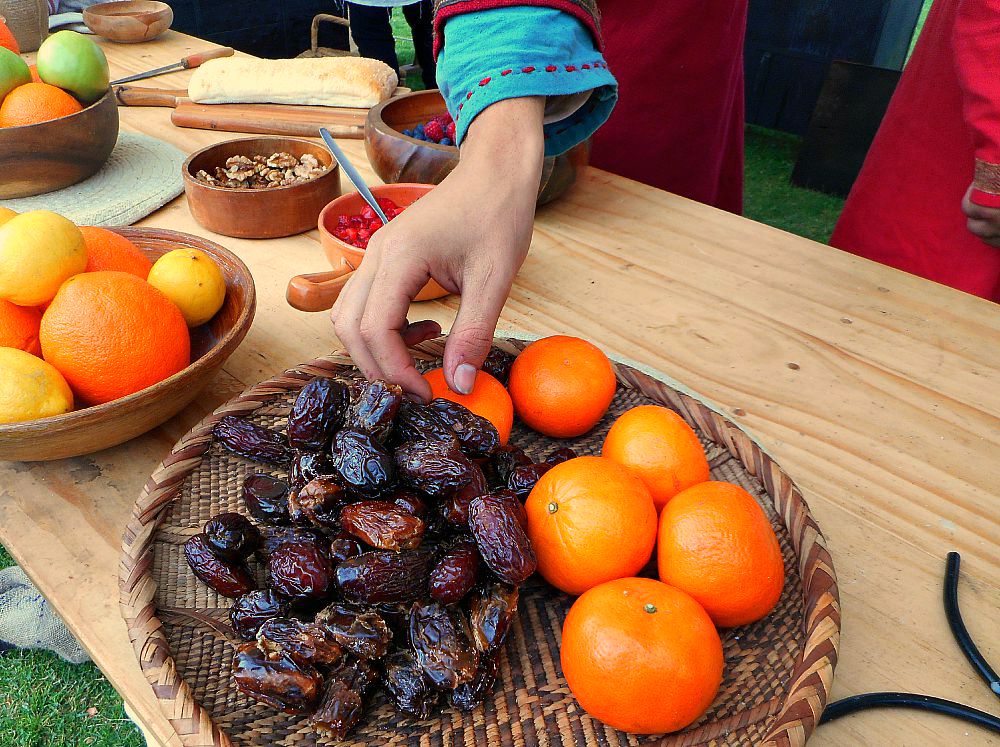
These crispy little pastries were light and crunchy, just the sort of thing you want to grab to nibble on while heading to a battle or for a bit of exploring around the markets.
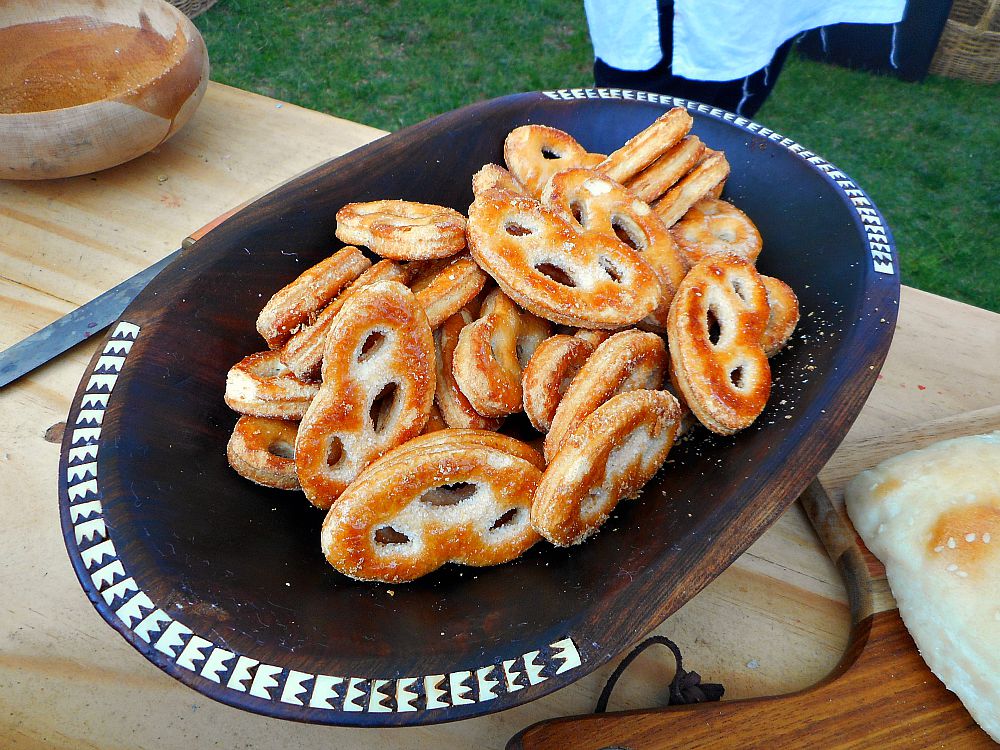
Lawrence also made a lovely strawberry sauce out of overripe strawberries. It would go beautifully over the grilled apple cinnamon French toast.
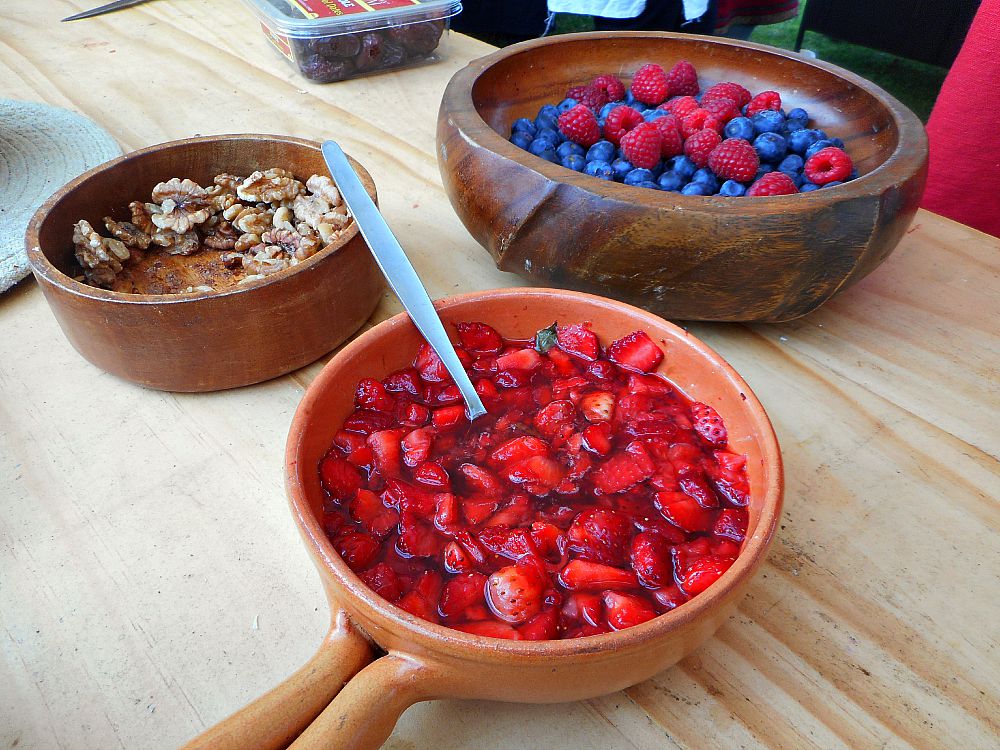
I like the look of this seeded bread in the basket. Doesn’t it make you want to tear off a piece and dunk it in herbed olive oil?
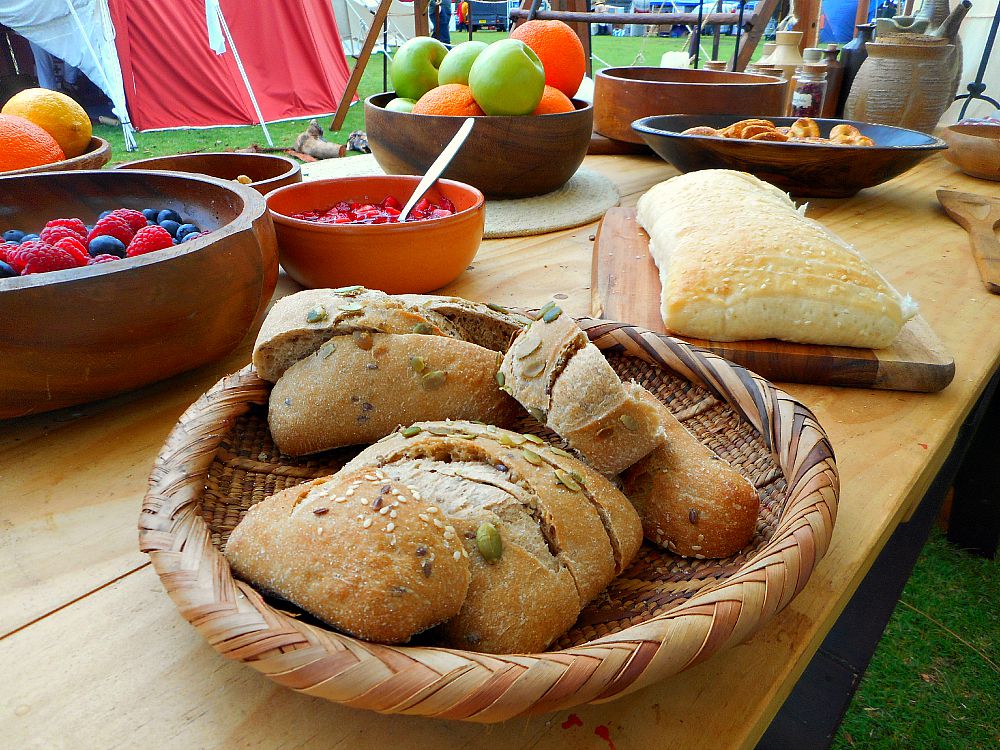
One of my favorite things the Templars make isn’t a food at all, but a drink. This gorgeous rosewater cordial flavored with fresh lemon and mint. It is truly refreshing on a hot afternoon, and so pretty to look at.
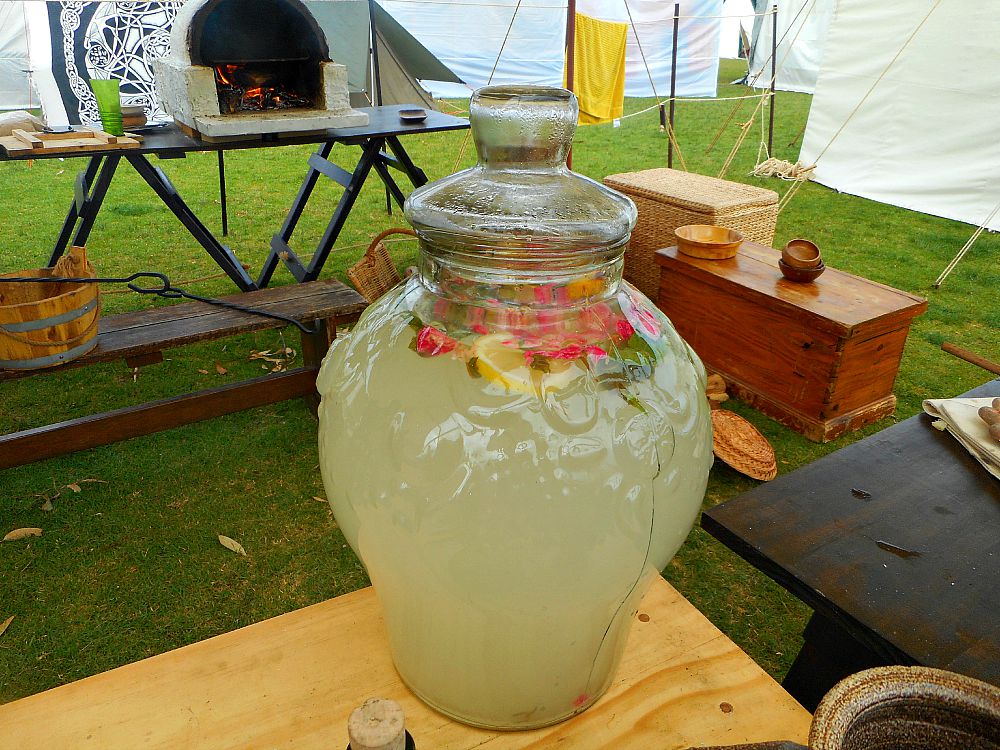
This week my friend Velva from Tomatoes on the Vine asked me to write about how I got into medieval enactment, and I’m happy to do so.
I’ve always loved history, spending innumerable hours as a girl reading encyclopedias, history books, and reference books to learn as much as I could. Reenactment wasn’t part of my world until I met my husband, Bear. I’d never known anyone who engaged in it, and really knew nothing about it. I honestly thought it was weird people dressing up in strange costumes and pretending they were someone else. How wrong I was.
Bear never pressured me to join in, just invited me to an event to see what I thought. I loved it!! These were my people, lovers of history and information, researchers and those who got in to try all the things I’d only read about. I met people who made leather shoes and Templar shields, those who dyed wool and linen with things they grew in their back yards, folks who made mead and their own ink and hand-sewed the most exquisite garments. I met bead-makers and wood-carvers, weavers and naalbinders, bone-carvers and blacksmiths.
I simply had to be part of it.
I joined the group run by my husband, Blackwolf, which is set in late 12th century/early 13th century, and started researching all sorts of cultures from that time period. My first persona was from medieval Finland and I set about making traditional 12th century Finnish clothing as I decided what I wanted to do. I thought about food, combat, clothing, and other crafts, and finally settled on medieval folk medicine. It has been a fantastic journey of learning and experimentation. I learned how to make my own medicines using herbs I now grow in my gardens. I love having things in my cupboard and fridge to alleviate stomach pains, headaches, burns, and cuts. That led to my writing a book of medieval remedies earlier this year. (Click here for a preview.) Making my own remedies is an extension of my desire to be as self-sufficient as possible.
The last few months I’ve been working towards a Bedouin persona, delving into the history of medieval Bedouin food, medicine, and culture. I’m working on new garb and adding Bedouin herbs and spices to my stock cupboard. It’s marvelously fun and interesting.
Now, however, I must get back to modern life and start a load of laundry, finish up the ham and cheese muffins I’m making, and tackle some paperwork.
What are you working on today? xo

by Krista | Aug 21, 2015 | Winter
Bear and I caught our first major cold-flu of winter this week, so we’re both rather pitiful and sticking close to home as we nurse sore throats, headaches and the lot.
Yesterday my friend Katie urged me to make elderberry syrup to both fight the illness and ease our burning throats. So I did just that.
I hauled out my carefully saved hoard of elderberries, a collection of spices, rainwater from our tank, and raw honey.
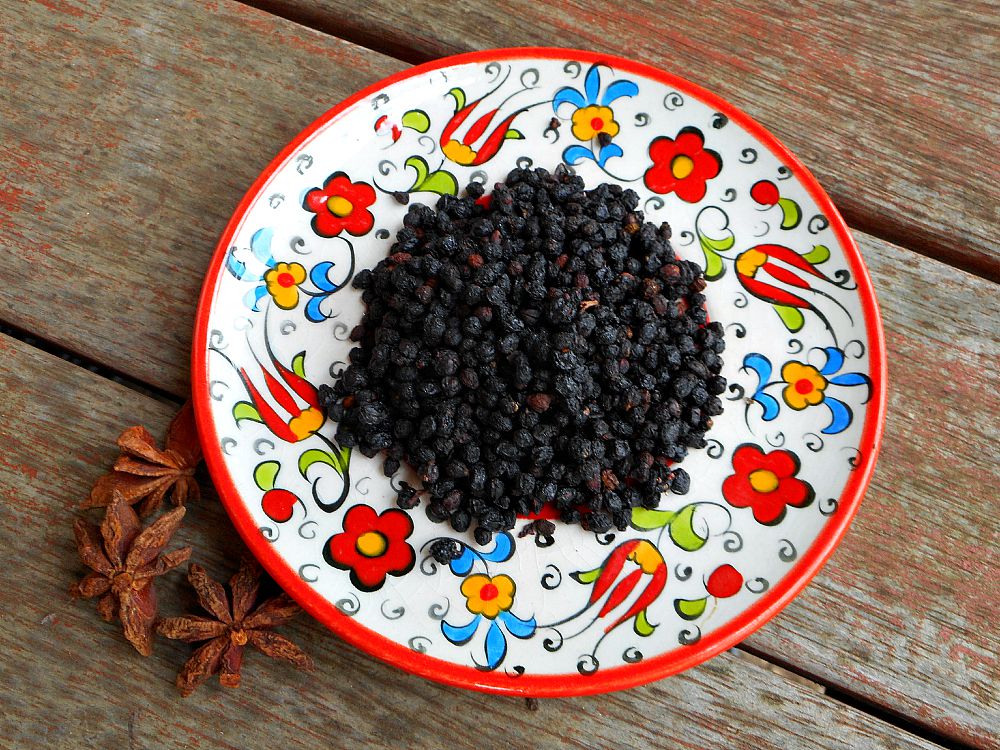
Elderflower syrup is lovely on its own, but the addition of bacteria and virus-fighting spices makes it extra good. I like cinnamon, cloves, ginger, cardamom pods, and my favorite, star anise. You could even through in some lemon zest.
Thankfully it not only tastes good and works well, it’s also easy to make. Just put everything but the honey in a saucepan and simmer until the liquid reduces by half. Then strain, cool, sweeten with the honey, and start taking 1 Tbsp every few hours (For grown-ups. Consult your pediatrician before giving elder to children.). I use about 1/4 cup of raw honey for mine, but if you want a thicker syrup consistency and more sweetness, add more honey.
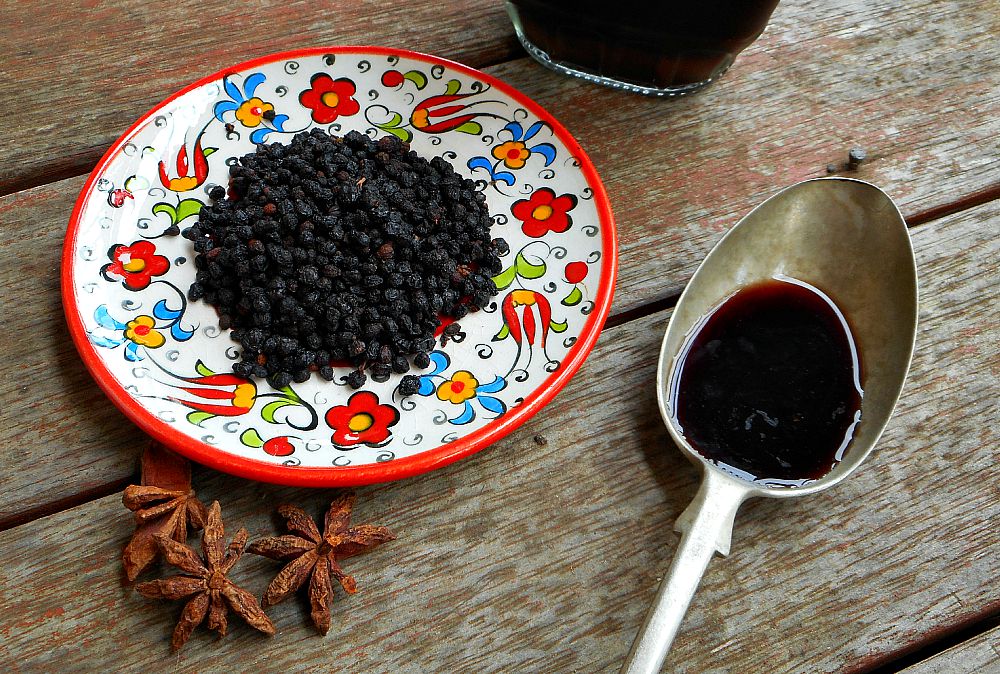
It is incredibly soothing. I told Bear it’s like each spoonful is a warm, soft blanket for my throat.
The efficacy of elderberries isn’t just folk medicine. Scientific studies have found it to be a safe, efficient, and cost effective treatment for influenza.
Sixty patients (aged 18-54 years) suffering from influenza-like symptoms for 48 h or less were enrolled in this randomized, double-blind, placebo-controlled study during the influenza season of 1999-2000 in Norway. Patients received 15 ml of elderberry or placebo syrup four times a day for 5 days, and recorded their symptoms using a visual analogue scale. Symptoms were relieved on average 4 days earlier and use of rescue medication was significantly less in those receiving elderberry extract compared with placebo.
Department of Virology, Hebrew University-Hadassah Medical School, Jerusalem, Israel
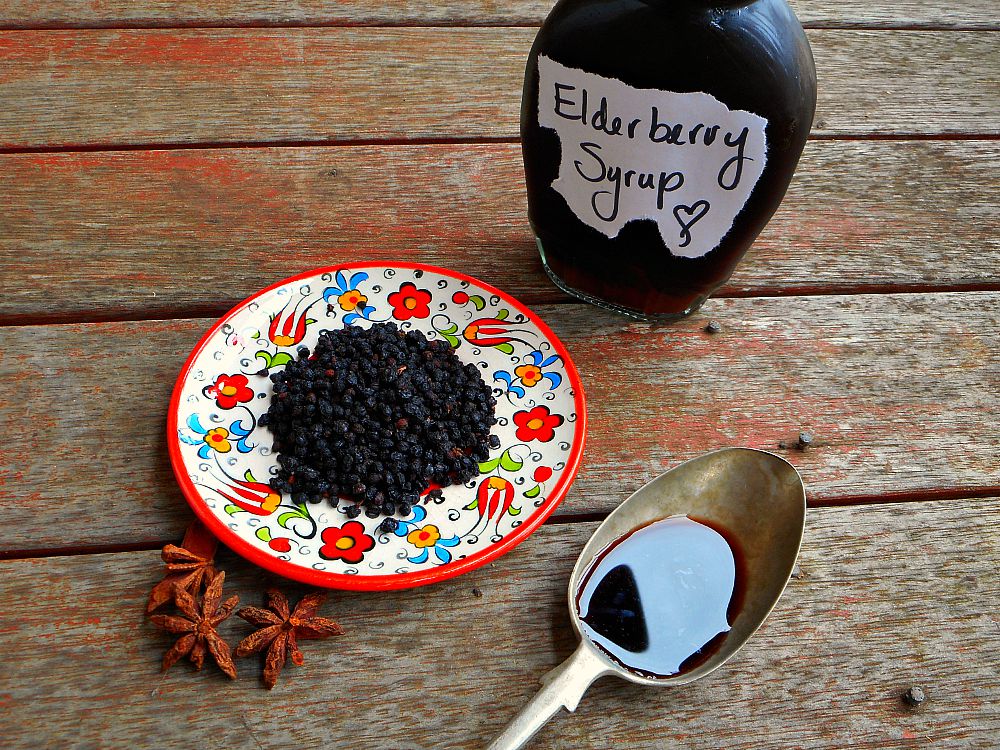
I love when science and tradition work hand in hand to help us feel better faster.
Now I’m going to curl up in bed with a good book and hot tea.
Do you have a tried and true remedy for helping you through cold and flu season? xo
For more recipes for traditional remedies, click here.
Elderberry Syrup
Ingredients:
1 cup elderberries (dried)
4 cups water
spices (cinnamon stick, clove buds, star anise, cardamom pods, etc)
raw honey to taste (I use about 1/4 cup, use more for thicker syrupy consistency.)
Directions:
- Place elderberries, water, and spices (NOT HONEY!) in medium pan over high heat. Bring to boil, reduce to simmer, cover and simmer for 20-30 minutes or until liquid reduces by half. Remove from heat, stir well and let steep a further 5-10 minutes.
- Strain mixture through a sieve, discard spices, save berries for baking or compost them.
- Let cool 5-10 minutes then stir in honey to taste.
- Pour into sterile bottles, seal, and refrigerate or freeze until ready to use.

by Krista | Jul 14, 2015 | Winter
We are home at last from our grand medieval adventures at the fabulous Abbey Medieval Festival.
Bear is aching all over from having a marvelous time engaged in medieval combat with Vikings, Templars, Varangians, and assorted knights, and I’m aching all over thanks to a venomous spider bite that made me keel over, sick as a dog, and had me hustled off to the hospital by ambulance. Ugh. I’ve heard about Australian spider bites and how painful they are, but I’ve never been bitten before, and I will be heartily glad to never get bitten again. It will take some time for the venom to get out of my system and the symptoms to dissipate, so in the meantime I’m drinking heaps of water and resting.
Thankfully the bite didn’t happen until Saturday night, so I got two and a half days of jolly times before the miseries set in.
We had such a great time catching up with dear old friends, hugging each other tight and nattering away as if no time had passed between visits.
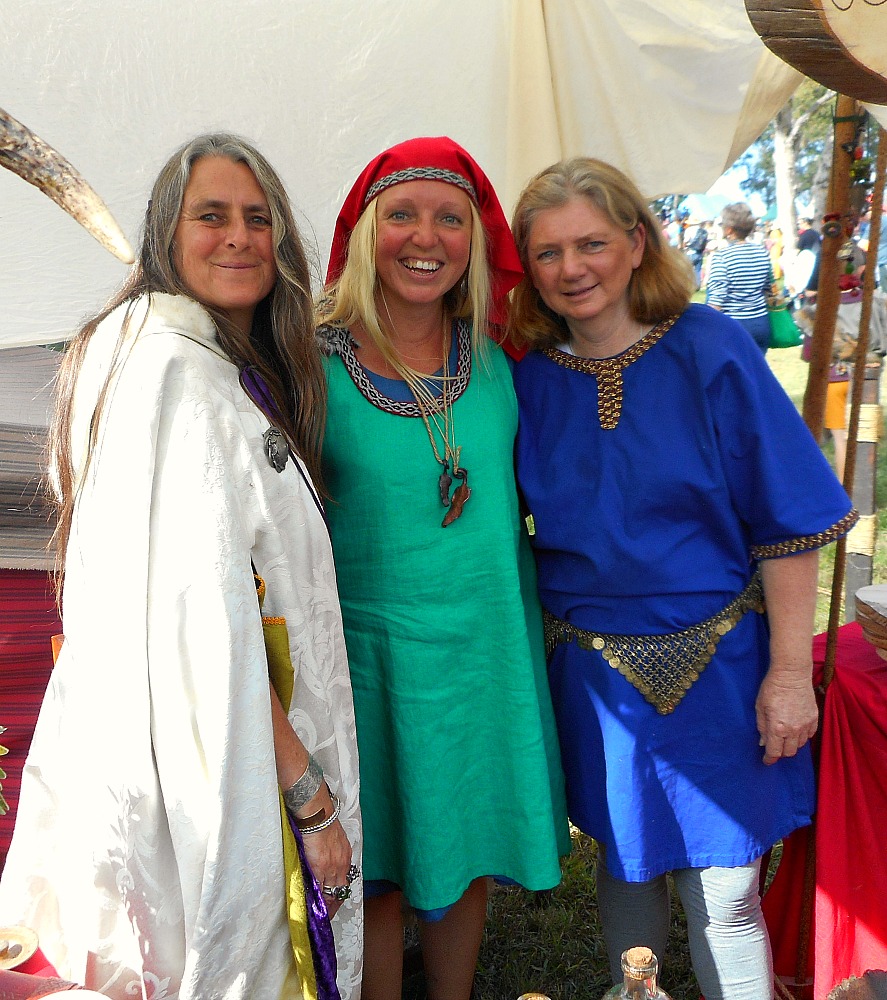
We chatted around campfires, over shared bottles of beer and cups of spiced wine, and in leisurely conversations over scrumptious meals seasoned with smoke.
We also met new friends, great people from around Australia with fascinating stories to share.
And we worked, boy, did we work hard setting up medieval tents and cooking accouterments, making beds, organizing tables, chairs, dishes, and food, starting fires, hauling water, and getting our demonstration areas arranged and spiffed up. We fell into bed exhausted but happy each night, sleeping like logs after all that physical labor. But it was pure fun, seeing our little medieval world come to life.
I got my medieval medicine and wood-burning area set up first thing. I always start early because all those fiddly bits take time to sort and get into place. Medicines and spices, dried herbs and fresh, baskets of wood-burned rolling pins, stacks of wood-burned cutting boards, and a pile of pristine copies of my book: “herb & spice: a little book of medieval remedies.”
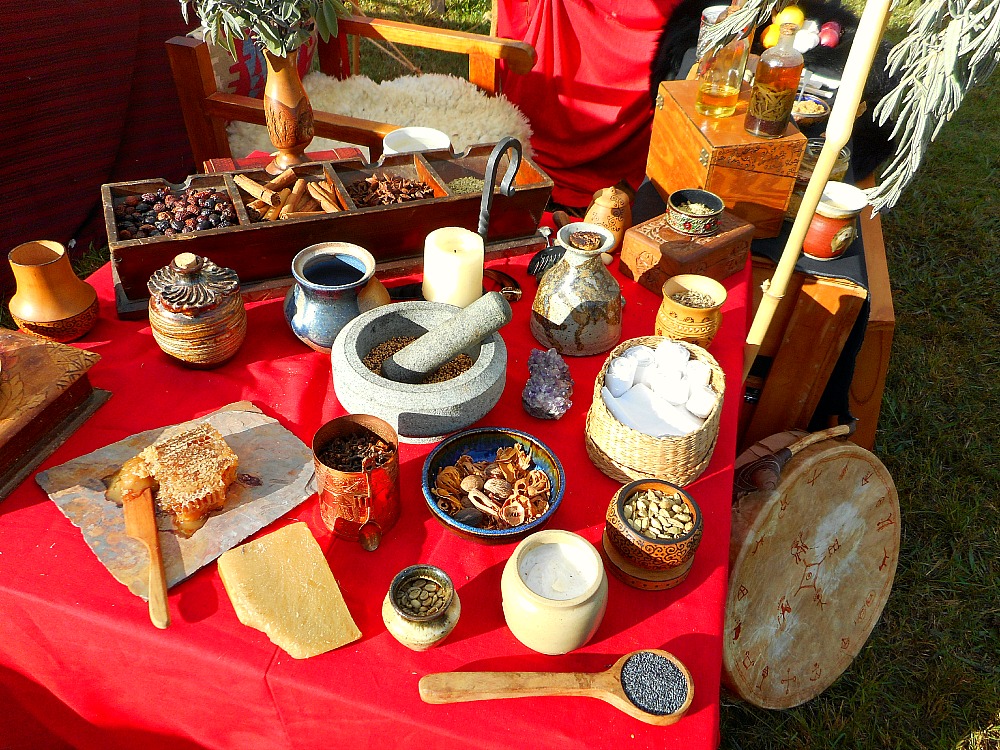
Even though I’ve set this up so many times, it’s always exciting to see it come together: bottles of medieval anesthetic, pots of medieval salves, balms, and ointments, and innumerable jars and boxes of spices and herbs from poppy seeds, mace, and rose hips to licorice root, fenugreek seeds, and raw honey in the comb.
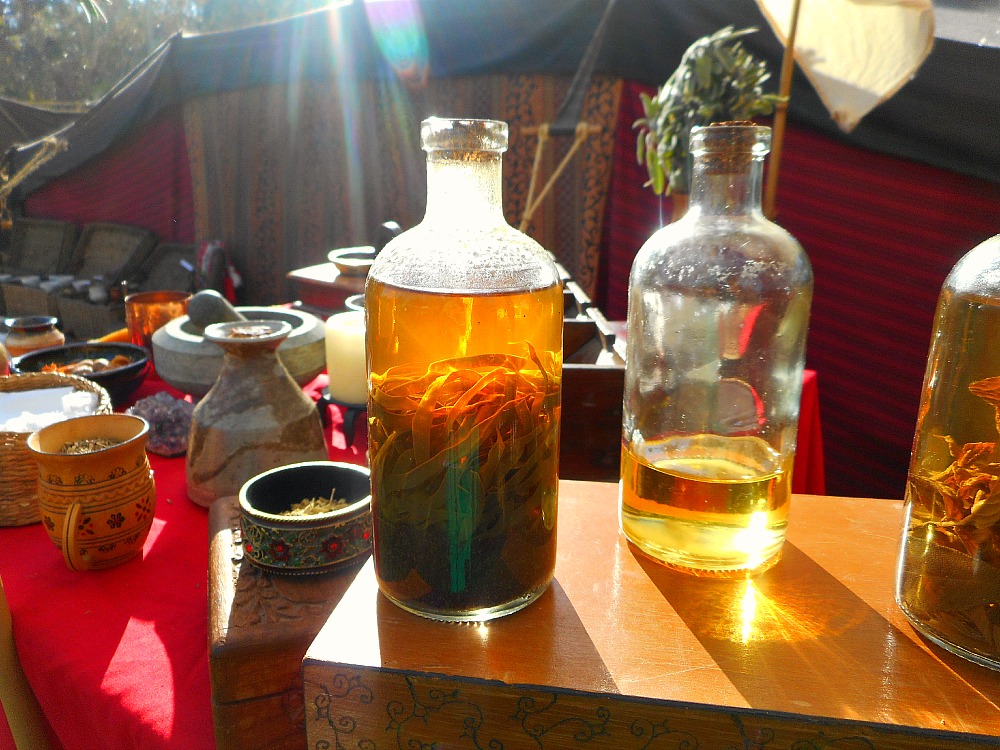
I like simmering a pot of rosemary leaves and pine needles (the vapors are great for clearing sinuses) and arranging the adorable quail eggs in their bowl (the egg whites make an excellent bandage if you cut yourself and happen to have an egg but no bandaids). I smile as I set out the bone implements hand-carved for me by my friend Stacey, and happily sniff the heady scent of nutmeg paste (so good for helping blemished skin to heal).
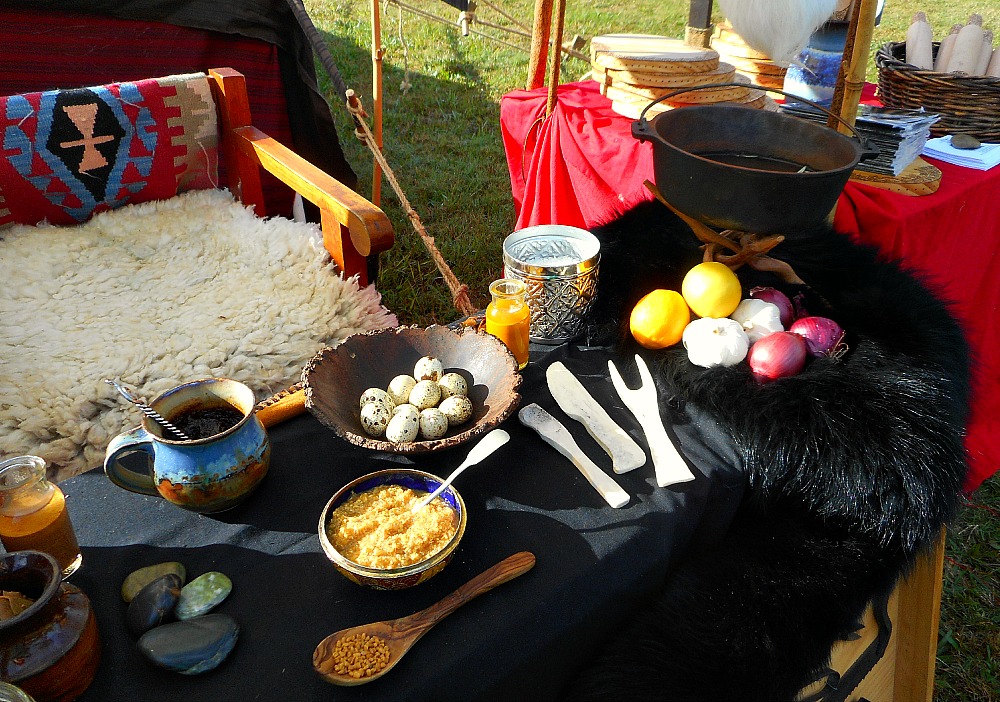
When everything is ready I relax, brew myself a cup of tea or coffee, and settle into my sheepskin-lined chair to read more about medieval medicine. It doesn’t matter how much I learn, there’s always so much more to discover.
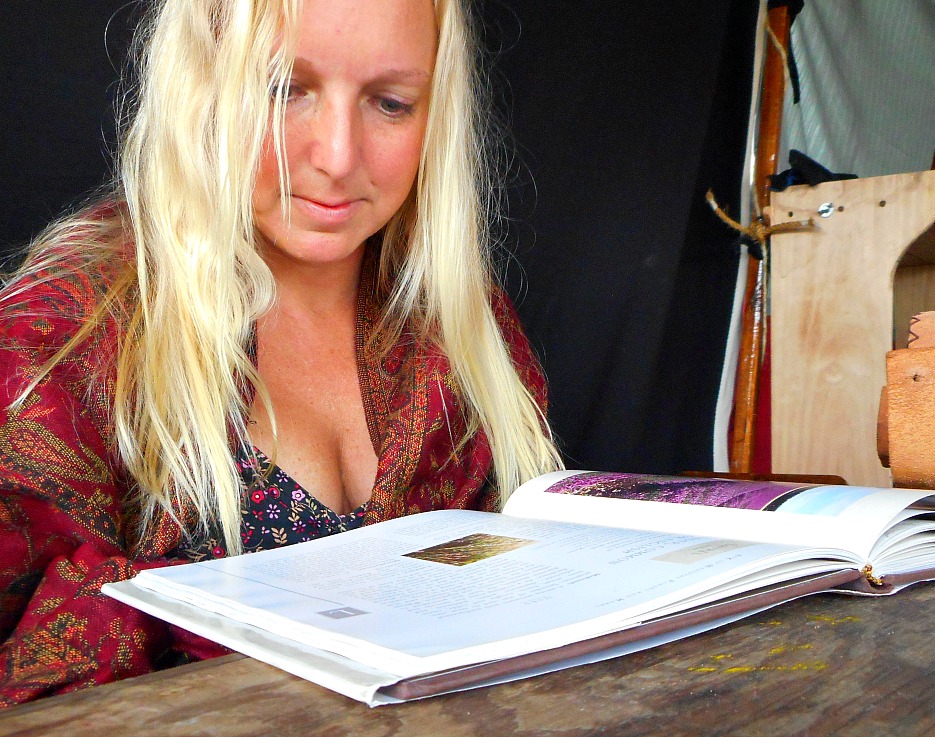
Soon the gates of Abbey open and I take my place behind my booth, ready to spend an entire day talking about the medieval things I love most: medicine, food, and daily life.
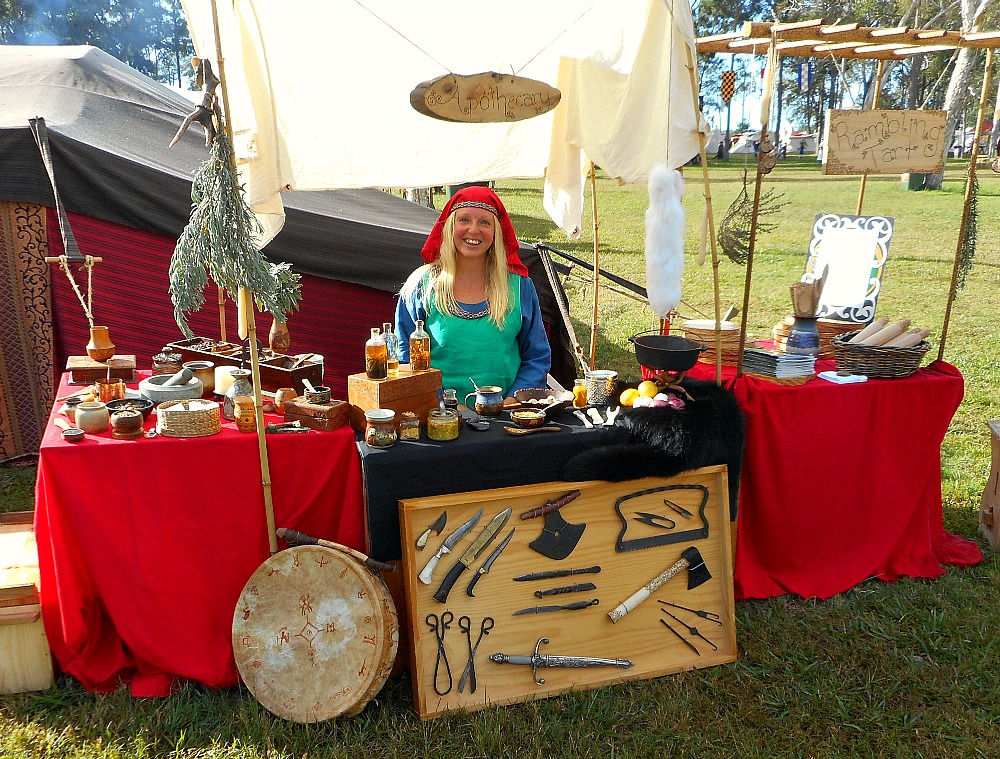
Now it’s time to get my aching self off to bed and dream of happy medieval things.
What is your favorite moment from your weekend? xo

by Krista | Jul 4, 2015 | Winter
Brrr, I’m warding off the morning chill with hot tea and a peanut butter cookie as I watch the sunrise light flood my kitchen. Soon I’ll be mixing and brewing in there, getting medieval medicines ready to demonstrate at Abbey Medieval Festival next weekend.
First, however, I’m excited to share with you my book: “herb & spice a little book of medieval remedies” that I finished this week.

It’s a lovely little book, chock full of over 50 recipes and remedies inspired by medieval writings, findings in recent archaeological digs, and nuggets of information passed on to me from friends, family, and medieval history buffs.
I’ve been making my own concoctions since I was a little girl, mixing up “healing brews” with my brothers and cousins that consisted almost entirely of dirt, sticks, water, and whatever weeds we could find. They healed no one, but added much to our imaginative enactments of dramatic flights from bad guys and heroic stands in the wilderness.
Making such things seemed natural to me since my Mum, aunts, and grandmother were always treating our various childhood ailments with applications of raw honey and herbal teas. I remember the year I got terrible frostbite on my face and my grandmother promptly put me to bed and slathered raw honey all over my face. It felt mighty strange, I tell ya, but it did the trick, and my skin healed quickly without any scarring.
In later years I studied herbal and traditional medicine on my own, reading books by the stack and finding myself often frustrated by the lack of practical information. Yes, I knew lavender was good for burns and licorice root would help with a chest cold, but HOW?? Did I make a paste? A tea? A salve of some sort? The nitty-gritty, that’s what I wanted to know.
So I kept studying and experimenting, taking the ingredients, testing them, and figuring out how to use them in effective ways.
Along the way I learned that natural does not equal safe. Herbs affect people differently and must be used with caution. They can also interact with medications and it is always best to consult your doctor before adding herbal remedies to your health regimen.
Good sense and good research are my rules of thumb. And honestly, the research is half the fun. I love learning what different tribes and cultures have used to heal and rejuvenate their people over the centuries. I’m fascinated by how modern science helps explain why things work, why they don’t, and how to use them safely.
Here is a little preview of “herb & spice – a little book of medieval remedies“:
If you would like to purchase a copy of your own, click here: “herb & spice – a little book of medieval remedies“
The book is printed in California and ships worldwide.
Do you have any herbal remedies you love to use in your family? xo




























